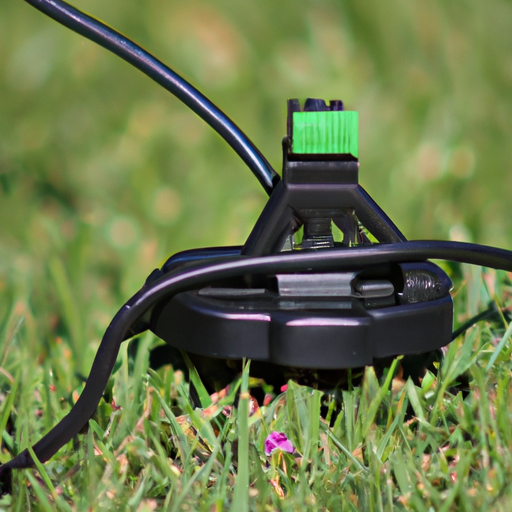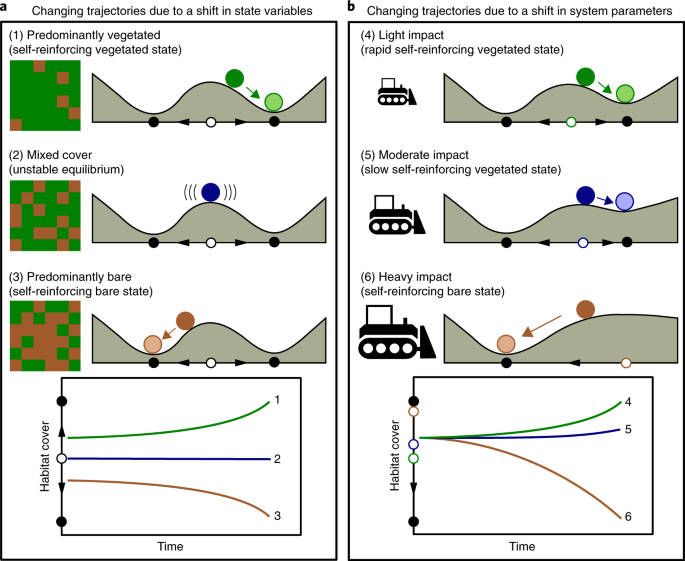Are you tired of struggling with tangled cords while trying to mow your lawn? Say goodbye to the chaos with Simplified Cord Management for Electric Lawn Mowers. This innovative solution is designed to streamline your mowing experience, making it easier than ever to navigate your yard without the hassle of tripping over cords. With a simple and effective cord management system, you can enjoy a stress-free mowing experience that will leave your lawn looking pristine. No more frustration, just effortless cord management with Simplified Cord Management for Electric Lawn Mowers.
Choosing the Right Extension Cord
Determining Amp Rating
When it comes to choosing the right extension cord for your electric lawn mower, one of the most important factors to consider is the amp rating. The amp rating of the extension cord must be equal to or higher than the amp rating of your mower. This ensures that the cord can handle the electrical load without overheating or causing any damage. To determine the amp rating of your electric lawn mower, refer to the manufacturer’s specifications or check the label on the mower itself.
Consider the Length
Another crucial aspect to consider when selecting an extension cord for your electric lawn mower is the length. The length of the cord should be appropriate for the size of your lawn. Ensure that the cord is long enough to reach all areas of your lawn without straining or requiring excessive stretching. On the other hand, avoid using an overly long cord as it can become a safety hazard and increase the risk of accidents.
Quality and Durability
The quality and durability of the extension cord should not be overlooked. Investing in a high-quality cord ensures longevity, reliability, and enhanced safety. Look for extension cords that are designed for outdoor use, as they are specifically built to withstand exposure to the elements. Additionally, cords with a thick, sturdy jacket and strong insulation are more resistant to damage, ensuring that they will last for years to come. Spending a little more upfront on a quality cord can save you from potential headaches down the line.
Organizing and Protecting Cords
Using Cable Clips
One way to keep your extension cords organized and prevent them from becoming tangled is by using cable clips. Cable clips are small plastic or metal clips that can be attached to walls, fences, or other surfaces. You can secure the cords using cable clips by inserting them into the clip’s grooves, creating a neat and organized appearance. Not only do cable clips keep your cords tidy, but they also help avert trip hazards and make it easier to mow your lawn without accidentally running over a cord.
Using Cord Hiders
If you prefer a more discreet solution for cord organization, cord hiders may be the perfect option for you. Cord hiders are typically made of plastic or rubber and are designed to conceal and protect your extension cords. They come in various shapes and sizes and are often available in colors that match your outdoor décor. Cord hiders are a great way to keep your cords organized and out of sight while still maintaining easy access when needed.
Using Cord Organizers
For those who like to go the extra mile in organizing and protecting their cords, cord organizers are an excellent investment. Cord organizers typically consist of a reel or spool that allows you to wind the cord neatly and keep it tangle-free. These organizers also come with handles or hooks that make it easy to hang or store the cords. Cord organizers not only keep your cords tidy, but they also help prolong their lifespan by preventing unnecessary tangling and damage.
Preventing Cord Tangles
Straightening Out the Cord
Before you start using your electric lawn mower, take a few seconds to straighten out the extension cord. Pull the cord firmly from both ends, removing any twists or loops. By straightening out the cord before each use, you can prevent tangles and ensure a smooth mowing experience. This simple step can save you time and frustration in the long run.
Using Cord Winders
Cord winders are a handy tool to prevent tangled cords. They come in different shapes and sizes, but the most common type is a handheld winder. To use a cord winder, simply wrap the extension cord around the winder in a neat and organized manner. The winder typically has a handle or hook, making it easy to carry or hang. By winding your cord properly on a cord winder, you eliminate the risk of tangling and make it effortless to unravel the cord when needed.
Using Cord Reels
If you prefer a more automated approach to cord winding, cord reels are an excellent option. Cord reels typically consist of a drum or spool that the extension cord can be wound around. Some cord reels feature a retractable mechanism that enables you to easily reel in and reel out the cord. This not only keeps your cord tidy but also makes it quick and convenient to store and retrieve the cord. Cord reels are available in various sizes and designs, so you can choose one that suits your specific needs.
Securing the Cord to the Mower
Velcro Straps
One effective way to secure the extension cord to your electric lawn mower is by using velcro straps. Velcro straps are flexible, adjustable, and easy to use. Simply wrap the strap around the cord and mower handle, then fasten it securely using the velcro closure. Velcro straps ensure that the cord stays in place while you mow, eliminating the risk of it getting caught or tangled in the mower’s moving parts. They are also reusable, so you can use them again and again.
Zip Ties
Zip ties, also known as cable ties, are another popular option for securing the cord to your mower. Zip ties are made of durable plastic and feature a locking mechanism that keeps them securely fastened. To secure the cord, thread the zip tie through the designated holes or slots on the mower handle and tighten it. Zip ties provide a strong and secure hold, preventing the cord from coming loose or getting entangled while you mow. However, it’s important to note that zip ties are generally not reusable, so you’ll need to cut them off and replace them when necessary.
Bungee Cords
For those looking for a more flexible and adjustable option, bungee cords can be a great choice. Bungee cords are stretchable and feature hooks on each end, making them easy to attach and detach. To secure the cord to the mower, stretch the bungee cord around the cord and the mower handle or frame, and hook each end securely. Bungee cords provide a firm hold while still allowing some flexibility and movement. They are especially useful if you need to adjust the cord length or remove it quickly. Just make sure to choose bungee cords that are the appropriate size and tension for your specific needs.
Creating a Safe Path for the Cord
Positioning the Cord
When using an electric lawn mower, it’s crucial to position the cord in a way that minimizes the risk of accidents and damage. Avoid positioning the cord in high-traffic areas where it can easily be tripped over or run over by the mower. Instead, try to keep the cord along the perimeter of the lawn or in areas with less foot traffic. By positioning the cord intelligently, you can reduce the risk of accidents and ensure a safer mowing experience.
Using Cord Covers
If you have areas in your lawn where the cord needs to cross walkways or driveways, using cord covers can help protect the cord and prevent tripping hazards. Cord covers are typically made of durable plastic or rubber and are designed to encase the cord securely. They provide a visible path for the cord and act as a protective barrier, shielding it from being stepped on or run over by vehicles. Cord covers are available in various lengths and designs, so you can choose the best option for your specific needs.
Burying the Cord
For a more permanent and inconspicuous solution, consider burying the cord underground. This method requires a bit more effort but can provide a cleaner and safer appearance. Before burying the cord, ensure that you are using an extension cord that is rated for in-ground use and intended for outdoor burial. Dig a trench along the desired path, lay the cord in the trench, and cover it with soil. Be sure to maintain the necessary depth and avoid burying the cord too shallow or too deep. Burying the cord not only eliminates tripping hazards but also protects it from potential damage caused by outdoor elements.
Protecting the Cord From Damage
Avoiding Obstacles
One of the simplest ways to protect your extension cord from damage is to avoid placing it near potential obstacles. Take note of any sharp objects, gardening tools, or other hazards that could cause accidental cuts or punctures. Make a conscious effort to keep the cord away from these hazards, ensuring its safety and longevity. By being mindful of your surroundings and taking precautions, you can minimize the risk of damaging your cord.
Elevating the Cord
Another effective method to protect the cord from damage is by elevating it off the ground. This can be done by using hooks, stakes, or other elevated surfaces. By keeping the cord elevated, you reduce the chances of it coming into contact with moisture, dirt, or sharp objects. Elevating the cord also makes it easier to see and avoids accidental trips or tangles. Be sure to use secure and sturdy hooks or stakes to prevent the cord from falling or being dislodged during use.
Using Cord Protectors
Cord protectors are a valuable investment when it comes to safeguarding your extension cord from damage. These protective devices are typically made of heavy-duty rubber or plastic and act as a shield for the cord. They are designed to withstand exposure to outdoor elements, including rain, sunlight, and impact. Cord protectors not only prolong the lifespan of your extension cord but also reduce the risk of accidents and electrical hazards. They are available in various lengths and sizes, allowing you to find the perfect fit for your cord.
Storing the Cord Properly
Coiling the Cord
Properly coiling the extension cord is essential for its longevity and ease of use. When coiling the cord, ensure that you do not create tight loops or knots, as these can cause damage and increase the risk of tangling. Instead, use loose coils, gently wrapping the cord around your hand or an appropriate coiling tool. Make sure the coils are uniform and not too tight. Coiling the cord properly not only prevents tangles but also makes it easier to store and unravel when needed.
Using Hose Reels
If you’re looking for an efficient and convenient way to store your extension cord, consider using a hose reel. Hose reels are designed for storing and dispensing hoses, but they can also be used for extension cords. Simply wind the cord around the hose reel and use the reel’s handle or crank to retract the cord. Hose reels typically come with hooks or holes for wall-mounting, allowing you to keep your cord neatly stored and readily accessible. Using a hose reel not only saves space but also protects the cord from damage and tangling.
Using Cord Storage Hooks
If you prefer a simpler storage solution, cord storage hooks can come in handy. Cord storage hooks are typically made of durable plastic or metal and can be easily mounted on the wall or other surfaces. To store your cord, wrap it in loose coils and hang it on the storage hook. The hook provides a designated place for the cord, keeping it organized and out of the way when not in use. Cord storage hooks are an affordable and practical option for those who want a hassle-free storage solution.
Minimizing Cord Length
Choosing the Right Mower
If you find that the length of your extension cord is a constant issue, consider investing in a corded electric lawn mower with a longer power cord. Many manufacturers offer electric mowers with longer cords, allowing you to reach larger areas of your lawn without the need for additional extension cords. By choosing a mower with a longer power cord, you can minimize the length of the extension cord needed, reducing the risk of tangling and making your mowing experience more convenient.
Installing Outdoor Outlets
Another way to minimize the length of the extension cord is by installing outdoor outlets strategically around your lawn. By having outlets in multiple locations, you can reduce the distance between the mower and the power source, minimizing the need for extension cords altogether. Consider consulting with a licensed electrician to ensure safe and proper installation of the outdoor outlets. This solution may require an upfront investment, but it can provide long-term convenience and eliminate the hassle of dealing with extension cords.
Using Cordless Lawn Mowers
If you’re seeking the ultimate solution to cord length issues, cordless lawn mowers are the way to go. Cordless mowers are powered by rechargeable batteries, eliminating the need for extension cords entirely. With a cordless mower, you can mow your lawn freely without any restrictions or tangles. However, it’s important to note that cordless mowers have a limited battery life, and you may need to recharge the battery multiple times for larger lawns. Cordless mowers are an excellent choice for those who value convenience and flexibility.
Improving Cord Accessibility
Using Multiple Outlets
If you have multiple electrical outlets available in your lawn, consider using them simultaneously to improve cord accessibility. By connecting different sections of your extension cord to different outlets, you can distribute the load and reduce the strain on a single cord. This method also allows you to have shorter cords, minimizing tangles and trip hazards. Make sure that the outlets you are using are suitable for outdoor use and follow the manufacturer’s guidelines for safe electrical connections.
Installing Cord Wrapping Stations
To further enhance accessibility and convenience, consider installing cord wrapping stations in various areas of your lawn. Cord wrapping stations can consist of durable posts with hooks or brackets designed for securing and organizing extension cords. By strategically placing these stations around your lawn, you can easily access and store your cords at different points, allowing for flexibility and a more efficient mowing experience. Cord wrapping stations are a practical addition for those who frequently move between different areas of their lawn.
Customizing the Mower
For those who enjoy solving problems with a touch of creativity, customizing your mower can be a fun and effective way to improve cord accessibility. Consider adding attachments or accessories to your mower to help manage and store the cord. For example, you can attach hooks or clips to the mower frame or handle to secure the cord in a designated spot. Alternatively, you can modify the design of your mower to include built-in cord storage compartments. By customizing your mower, you can tailor it to your specific cord management needs and make your mowing routine more seamless.
Conclusion
Proper cord management is crucial for a safe, efficient, and enjoyable electric lawn mowing experience. By choosing the right extension cord, organizing and protecting your cords, preventing tangles, securing the cord to the mower, creating a safe path, protecting the cord from damage, storing it properly, minimizing cord length, improving accessibility, and customizing your mower, you can ensure that your cord management game is on point. Remember to prioritize safety at all times and follow the manufacturer’s guidelines for your specific electric lawn mower. With the right approach to cord management, you can maintain a well-organized and hassle-free lawn mowing routine.





